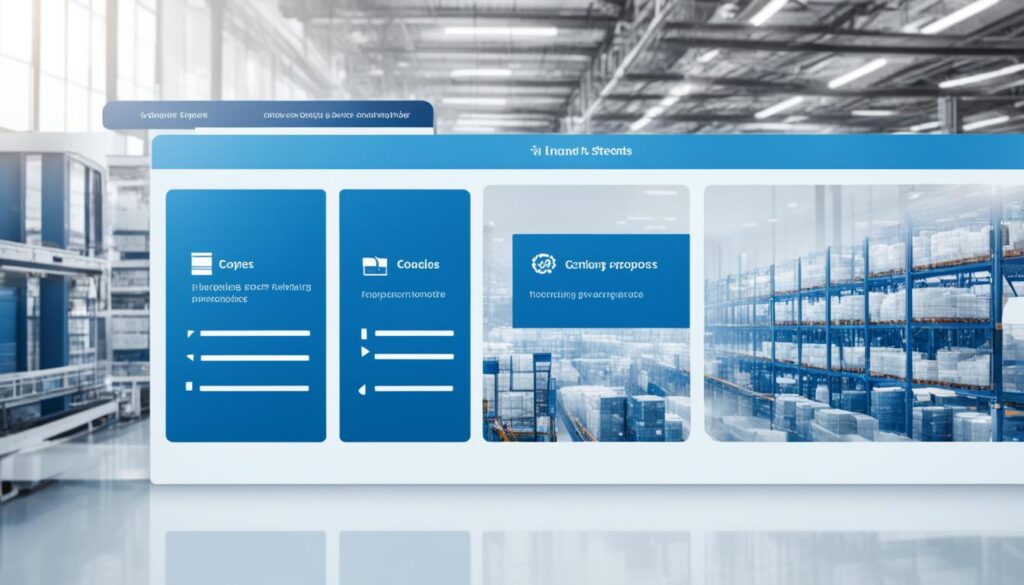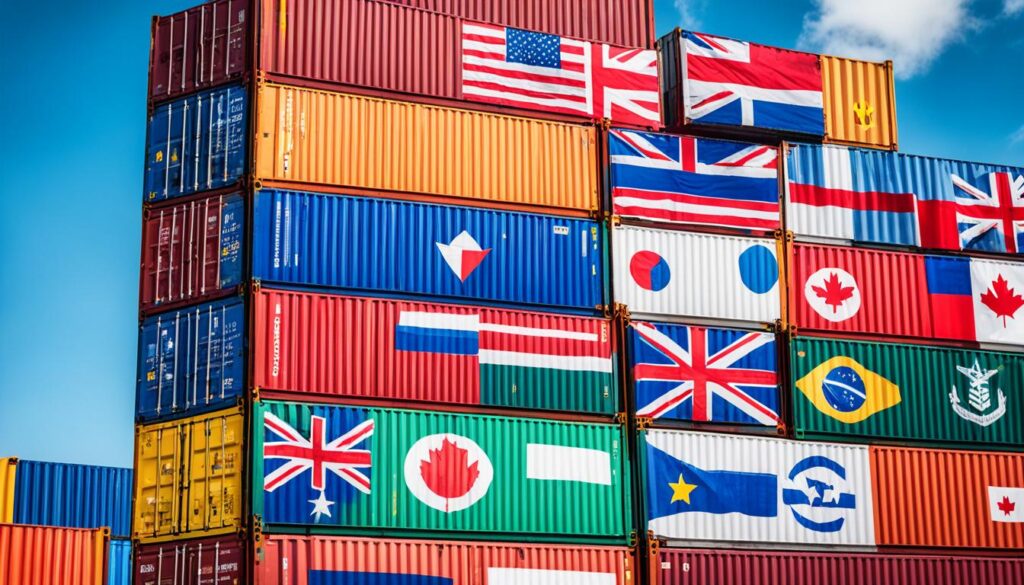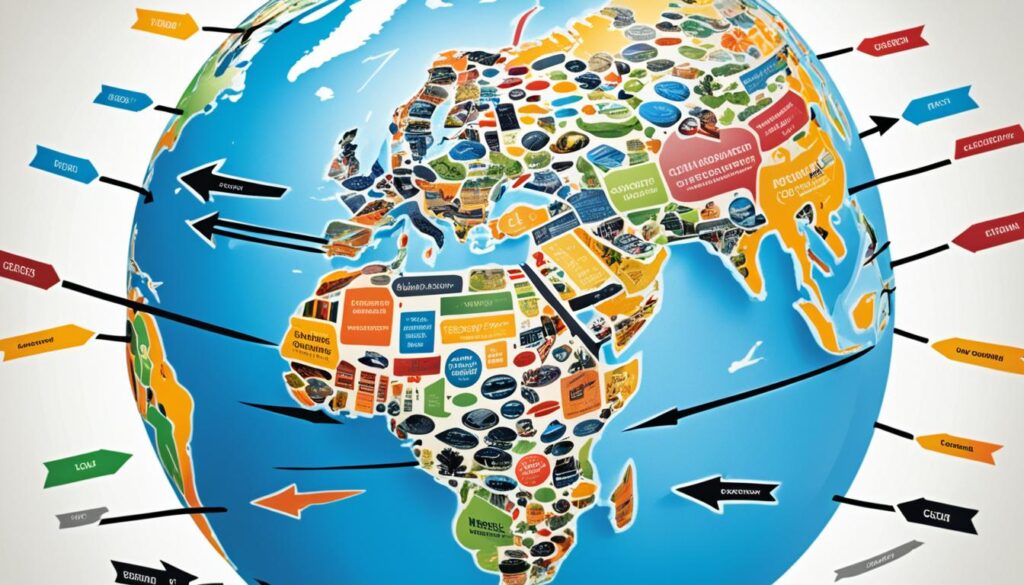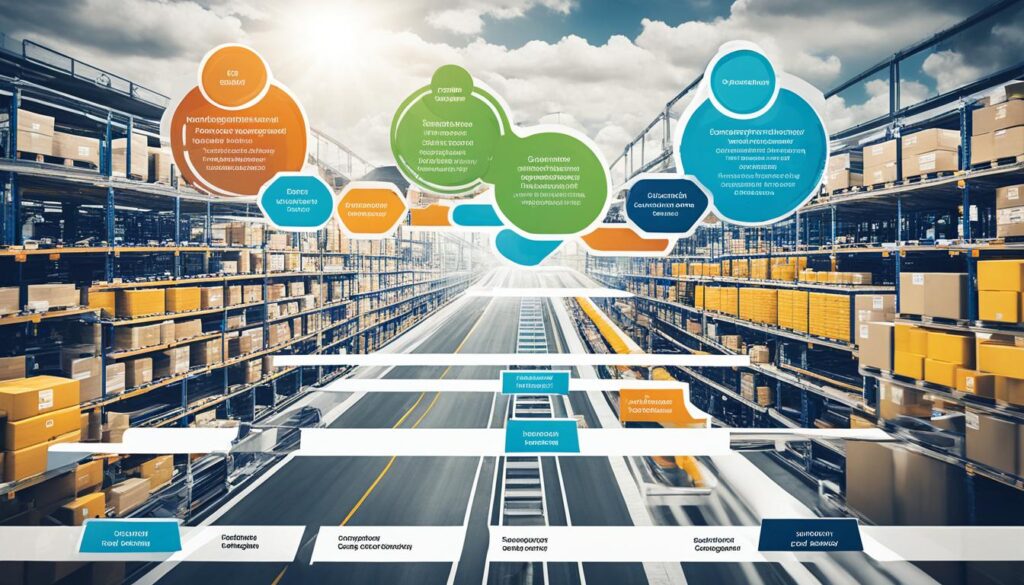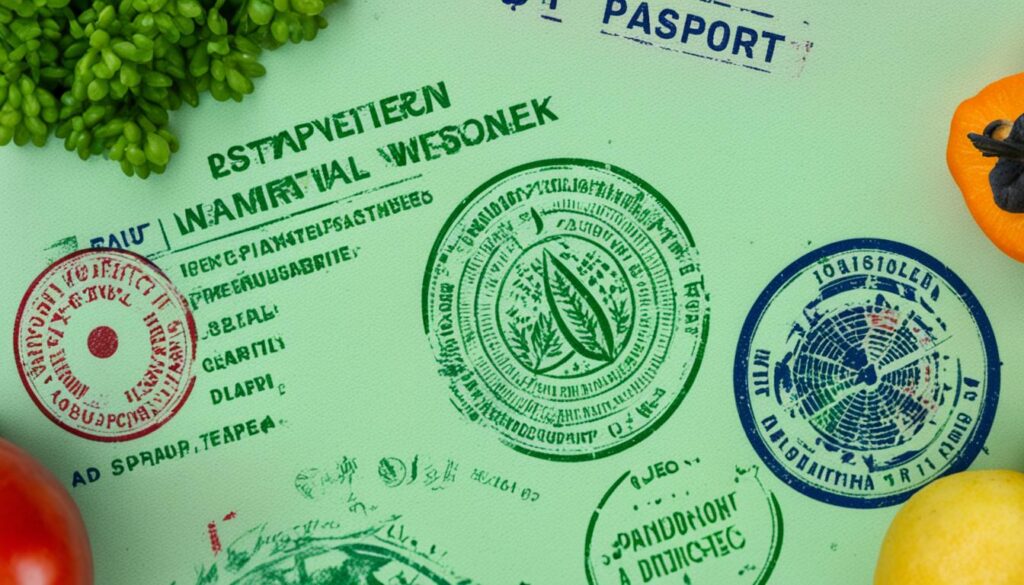Are you looking to expand your business through import/export? Are you daunted by the complexities of international trade and customs clearance? Fear not, as I’m here to provide you with expert tips to simplify your importing process and streamline your operations.
International trade can open up a world of opportunities for your business, but it also comes with its fair share of challenges. Navigating customs regulations, managing documentation, and ensuring efficient logistics can be overwhelming. However, with the right strategies and guidance, you can overcome these obstacles and achieve successful imports while saving time and resources.
In this article, we will delve into the intricacies of customs clearance, help you understand import duties, and share insights on optimizing your import process. From understanding requirements and utilizing templates to automating processes and using digital tools, we will cover it all. By the end, you’ll be equipped with the knowledge you need to simplify your importing process and reap the rewards of global sourcing.
So, are you ready to simplify importing and unlock the potential for your business? Let’s dive in and discover how you can streamline your operations for successful international trade.
Key Takeaways:
- Navigate customs clearance by understanding specific requirements
- Utilize templates and checklists for efficient documentation management
- Automate processes to reduce manual work and enhance accuracy
- Embrace digital tools for enhanced efficiency and security
- Train your staff on import/export documentation best practices
Know the Requirements for Smooth Customs Clearance
Customs clearance is a critical aspect of importing goods and ensuring a smooth flow of trade. To simplify the documentation process and avoid complications, it is important to have a clear understanding of the specific requirements set by customs authorities, trade agreements, and industry standards. These requirements dictate the rules and formats for various documents involved in customs clearance, such as invoices, packing lists, certificates of origin, bills of lading, and permits. Failing to adhere to these requirements can result in mistakes, rejections, or fines that can disrupt your import process.
Researching and verifying the necessary documents is essential to ensure compliance. Refer to official sources, guidelines, and experts in the field to stay up-to-date with the latest requirements. The following documents are commonly required for customs clearance:
- Invoices: Provide details about the value and nature of the goods.
- Packing lists: Outline the contents, quantities, and packaging of the shipment.
- Certificates of origin: Verify the country where the goods were produced.
- Bills of lading: Serve as a contract of carriage between the shipper and the carrier.
- Permits: Obtain permission for restricted goods or controlled substances.
Understanding the specific requirements for each document and ensuring their accuracy and completeness is crucial. This will facilitate efficient customs clearance and help avoid unnecessary delays or complications. Consulting with customs experts or authorities can provide valuable guidance and assistance in meeting the requirements effectively.
By proactively knowing and meeting the requirements for customs clearance, you can streamline your import process, maintain regulatory compliance, and ensure the smooth flow of your goods across borders.
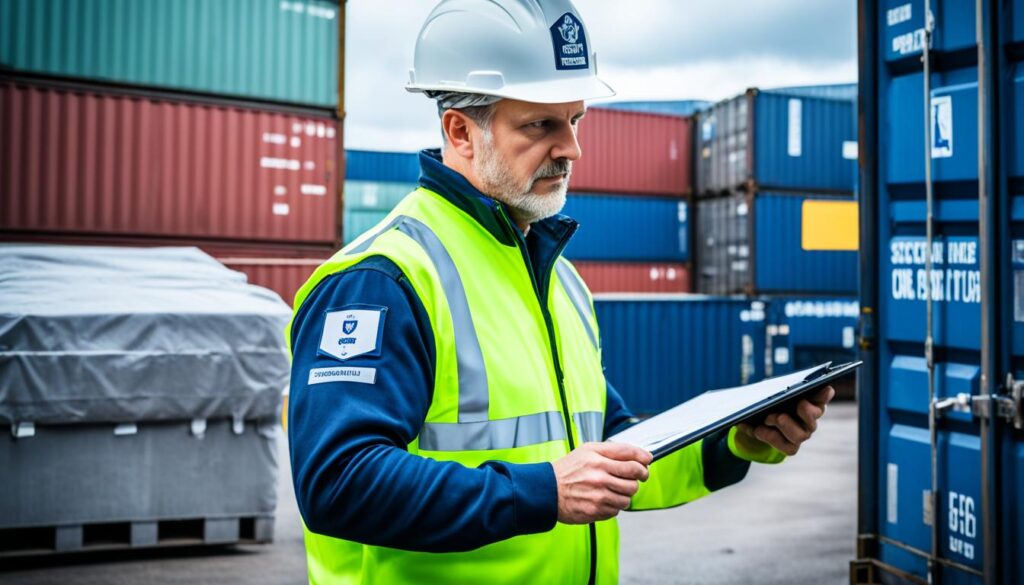
Industry Standards and Trade Agreements
It is important to note that industry standards and trade agreements can also impact the customs clearance requirements for specific goods. These standards and agreements aim to ensure uniformity, safety, and fair trade practices. Examples of industry standards include ISO certifications for quality management and safety standards for hazardous materials. Trade agreements, such as free trade agreements or preferential trade agreements, may provide exemptions or reduced tariffs for goods traded between certain countries.
When importing goods, consider the relevant industry standards and trade agreements that may apply to your products. Adhering to these standards and taking advantage of favorable trade agreements can simplify your customs clearance process and provide cost savings.
“Understanding the specific requirements for customs clearance documents is crucial to avoid complications and delays. By staying up-to-date with customs regulations, trade agreements, and industry standards, importers can streamline their processes and ensure compliance.” – Jane Smith, Customs Compliance Expert
Use Templates and Checklists for Efficient Documentation
When it comes to import documentation, accuracy and completeness are of utmost importance. However, manually creating and managing documents such as invoices and packing lists can be time-consuming and prone to errors. That’s where templates and checklists come in handy.
Templates provide a standardized format for your documents, ensuring consistency and saving you valuable time. You can either use templates from reliable sources or create your own based on your specific needs and preferences.
Checklists, on the other hand, serve as a helpful tool to verify the details, dates, signatures, and attachments of each document before sending or receiving them. By using checklists, you minimize the chances of errors or omissions that may lead to complications in your import process.
Implementing templates and checklists in your documentation management not only streamlines the process but also ensures the accuracy and completeness of your paperwork. This, in turn, helps you maintain efficient shipments and avoid delays or issues due to documentation errors.
Here is an example of how templates and checklists can simplify your import documentation:
Template Example: Invoice
| Invoice Number | Date | Customer Name | Product Details | Quantity | Unit Price | Total |
|---|---|---|---|---|---|---|
| INV-001 | July 15, 2022 | ABC Company | Product A | 100 | $10.00 | $1,000.00 |
| INV-002 | July 16, 2022 | XYZ Corporation | Product B | 50 | $15.00 | $750.00 |
Checklist Example: Packing Slip
- Check if all items listed on the packing slip match the actual items being shipped.
- Verify that the quantities and descriptions are accurate.
- Ensure that the packing slip is signed and dated by the responsible personnel.
- Double-check if all necessary attachments, such as certificates of origin, are included.
By utilizing templates and checklists, you can streamline your import documentation, improve accuracy, and increase the efficiency of your shipments. These simple yet effective tools contribute to a successful import process and ensure that your documentation is complete and error-free.
Automate Processes for Efficiency and Accuracy
Automating your import processes is essential for reducing manual work, minimizing errors, and eliminating duplication. By utilizing software systems to generate, store, and transmit your import documents, you can streamline your documentation management and enhance overall efficiency and accuracy.
One valuable automation tool is electronic data interchange (EDI), which enables the electronic exchange of documents with your trading partners. This eliminates the need for manual data entry and speeds up the communication process, ensuring smooth collaboration and reducing the risk of errors.
Another helpful software system is a freight management system (FMS). This system assists in creating and managing documents for your shipments, allowing you to efficiently handle tasks such as generating shipping labels, tracking deliveries, and managing invoices.
Integrating your documentation processes with other aspects of your logistics can further optimize efficiency and effectiveness. By connecting your import documentation with inventory management, tracking systems, and billing processes, you can ensure seamless operations and improve overall productivity.
Automating your import processes allows you to:
- Minimize manual work and reduce the chances of errors
- Eliminate document duplication and streamline your documentation management
- Improve speed and efficiency in communication with trading partners
- Enhance accuracy and completeness of import documents
By embracing automation, you can simplify your import processes and focus on strategic decision-making rather than repetitive administrative tasks, ultimately driving productivity and business growth.

With automated processes in place, you can experience significant time and cost savings while ensuring accuracy and compliance in your import operations.
Utilize Digital Tools for Enhanced Efficiency and Security
Digital tools play a pivotal role in streamlining your import process and ensuring maximum efficiency and security. By leveraging these tools, you can optimize your workflow, enhance collaboration, and mitigate potential risks. Here are some key digital tools that can greatly benefit your import operations:
Cloud-Based Platforms for Seamless Access and Document Sharing
Cloud-based platforms revolutionize the way you handle and manage documents, eliminating the need for physical copies and tedious mailing processes. By storing your import-related documents in the cloud, you gain instant access to them from anywhere, at any time. These platforms also facilitate easy and secure document sharing among team members, stakeholders, and customs authorities.
Efficient Document Updates with Real-Time Collaboration
Updating your import documents becomes effortless with real-time collaboration features enabled by digital tools. Multiple team members can work on a document simultaneously, ensuring accuracy and eliminating time-consuming back-and-forth communication. This not only improves efficiency but also reduces the chances of errors and delays.
Digital Signatures for Document Authentication and Validation
Digital signatures provide a robust layer of security and integrity to your import documents. By electronically signing your documents, you can authenticate their origin and verify their contents. Digital signatures offer tamper-evident features, ensuring that your documents remain intact and unaltered during transit.
Compliance Support with Blockchain Technology
Blockchain technology is revolutionizing various industries, and import processes are no exception. By leveraging blockchain, you can establish an immutable and transparent record of every transaction, ensuring compliance with customs regulations and enhancing accountability. The distributed nature of blockchain ensures the authenticity and integrity of your import-related data.
These digital tools empower you to streamline your import process, boost efficiency, and enhance security. By embracing these technology-driven solutions, you can optimize your operations, minimize errors, and ensure compliance with regulatory requirements.

In the next section, we will explore the importance of training your staff on import/export documentation best practices, further enhancing the efficiency and effectiveness of your import process.
Train Your Staff on Import/Export Documentation Best Practices
Proper training is essential to ensure that your staff is equipped with the knowledge and skills needed to handle import/export documentation efficiently. By providing comprehensive training, you can help your staff understand the importance, purpose, and correct format of each document, enabling them to handle them correctly and effectively.
“Proper training is the foundation for efficient import/export documentation handling.”
Training also plays a crucial role in keeping your staff up to date with changes in regulations, technologies, and market trends that impact import/export documentation. It ensures that they are aware of any new procedures or best practices in the field, allowing them to adapt and apply the most current information to their work.
There are various methods you can use to provide training to your staff. Online courses offer the flexibility of self-paced learning, allowing your employees to complete the training at their own convenience. Workshops and webinars provide interactive learning experiences, where your staff can engage with industry experts and ask questions specific to their roles and responsibilities. Mentoring programs offer personalized guidance and support, giving your staff the opportunity to learn from experienced professionals in import/export documentation.
“Investing in training shows your commitment to excellence and continuous improvement, leading to enhanced operational efficiency.”
Benefits of Training Your Staff on Import/Export Documentation Best Practices
When you invest in training your staff on import/export documentation best practices, you can expect several benefits:
- Increased efficiency: Properly trained staff can handle documentation tasks more efficiently, reducing errors and saving time.
- Enhanced compliance: Training ensures that your staff is aware of the importance of compliance and follows the correct procedures, reducing the risk of penalties or delays.
- Consistency and standardization: By providing training, you can establish consistent practices and standards across your organization, ensuring that all documents are handled uniformly.
- Adaptability to changes: Training helps your staff stay updated with changes in regulations and industry practices, allowing them to adapt and implement new requirements effectively.
- Professional growth: Staff training provides opportunities for professional development, allowing your employees to acquire new skills and enhance their career prospects.
To summarize, training your staff on import/export documentation best practices is crucial for efficient and compliant operations. It equips your employees with the necessary knowledge and skills, enabling them to handle documentation correctly, keep up with industry changes, and contribute to the overall success of your import/export process.

| Training Methods | Benefits |
|---|---|
| Online courses |
|
| Workshops and webinars |
|
| Mentoring programs |
|
Regularly Review and Improve Your Documentation Processes
As importers, it is essential to regularly review and improve our documentation processes to ensure the quality and efficiency of our import process. By taking the time to analyze our documentation procedures and identify any issues or gaps, we can address them proactively and make necessary improvements to optimize performance. This ongoing review process allows us to stay ahead of potential risks, errors, delays, and non-compliance, ultimately leading to smoother operations and successful imports.
The Importance of Reviewing Documentation Processes
Reviewing our documentation processes is crucial for several reasons. Firstly, it helps us identify any issues or gaps that may exist in our current procedures. By thoroughly examining our documentation from start to finish, we can identify areas that may be prone to errors or delays. Additionally, we can pinpoint any non-compliance with regulations or industry standards and take immediate corrective actions.
Furthermore, reviewing our documentation processes allows us to continuously improve and refine our templates and checklists. By seeking feedback from our trading partners, customers, and authorities, we can gather valuable input to enhance the clarity, accuracy, and completeness of our documents. This iterative process ensures that our documentation remains up-to-date and aligned with best practices in the industry.
Addressing Issues and Implementing Improvements
Once we have identified any issues, gaps, or risks in our documentation processes, it is essential to address them promptly and effectively. This may involve revising our templates and checklists to incorporate feedback and lessons learned. It may also require us to introduce new procedures or workflows to mitigate risks or streamline operations.
Implementing improvements can be done in collaboration with our team, trading partners, or even through external assistance. Seeking feedback from those involved in the import process can provide fresh perspectives and insights. Additionally, utilizing expert assistance, such as consultants or customs brokers, can offer valuable guidance and assistance in implementing corrective and preventive actions.
Optimizing Documentation Processes for Efficiency and Compliance
Through regular review and improvement of our documentation processes, we can optimize our import process for both efficiency and compliance. By addressing issues, risks, and gaps, we enhance the overall performance and reduce the chances of errors, delays, or non-compliance.
Moreover, optimizing our documentation processes enables us to refine our templates and checklists to align with industry best practices and regulatory requirements. This ensures that every document is accurate, complete, and compliant, reducing the risk of rejections or fines.
Assistance in Documentation Process Improvement
When it comes to improving our documentation processes, we can seek assistance from various sources. Customs brokers, with their expertise in customs regulations and import procedures, can provide valuable guidance and support. They can help us navigate the complexities of documentation requirements, stay updated on regulatory changes, and ensure compliance.
Additionally, feedback from trading partners and customers can offer insights into areas that may need improvement. By actively seeking assistance and feedback, we can enhance our documentation processes and build stronger relationships with our partners.
“Regularly reviewing and improving our documentation processes is a key aspect of maintaining efficiency and compliance in the import process. By identifying and addressing any issues or gaps, we can optimize our performance and reduce the risks of errors, delays, or non-compliance. Utilizing feedback, expert assistance, and continuously striving for improvement will lead to smoother operations and successful imports.”
Documentation Process Improvement Checklist
| Step | Actions |
|---|---|
| Step 1 | Review existing documentation templates and checklists |
| Step 2 | Seek feedback from trading partners, customers, and authorities |
| Step 3 | Identify issues, gaps, risks, and non-compliance |
| Step 4 | Implement improvements and corrective actions |
| Step 5 | Train staff on updated procedures and best practices |
| Step 6 | Regularly review and update documentation processes |
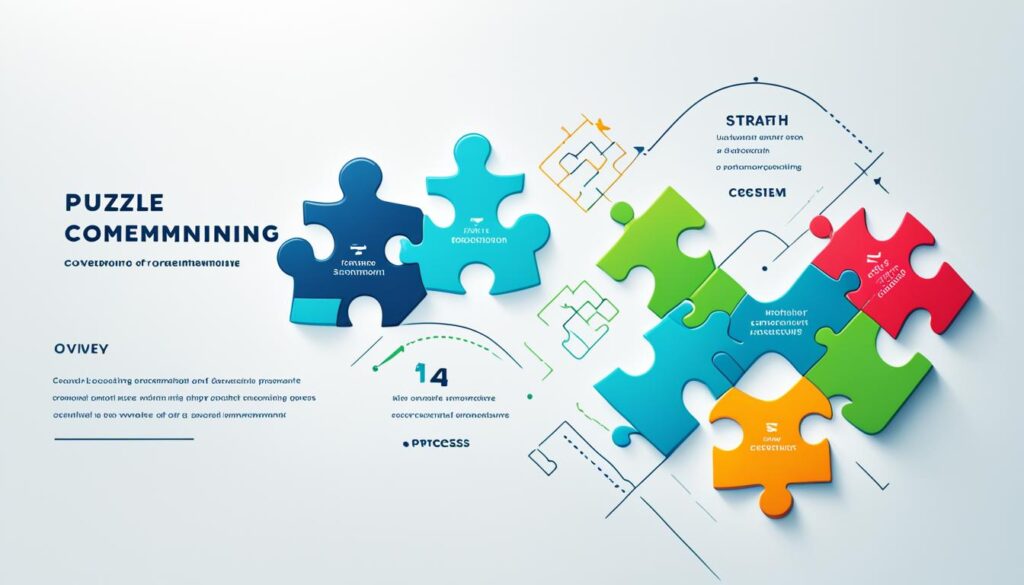
Understanding the Customs Clearance Process
When it comes to import operations, understanding the customs clearance process is paramount. This process involves meticulous examination of the paperwork by a customs officer, ensuring accuracy and completeness for a smooth clearance. Let’s take a closer look at the essential elements involved:
- Commercial Invoice: This document provides a detailed account of the goods being imported, including their value, quantity, and description. It serves as an important reference for customs authorities to assess import duties and taxes accurately.
- Packing Slip: The packing slip provides information about the contents of each package, including item descriptions, quantities, and weights. It assists customs officers in verifying the accuracy of the shipment.
- Shipping Labels: Shipping labels contain crucial details such as the consignee, consignor, tracking numbers, and other shipping information. These labels enable customs officers to identify the shipment and ensure proper handling and delivery.
- Import Duties and Taxes: Based on the information provided in the customs paperwork, import duties and taxes are assessed. These fees are then requested from the importer, if applicable, and must be paid promptly to facilitate customs clearance.
- DDP and DDU: The choice between Delivered Duty Paid (DDP) and Delivered Duty Unpaid (DDU) determines how import duties and taxes are handled. With DDP, the seller takes responsibility for these charges, whereas with DDU, they are the buyer’s responsibility.
Once all duties and taxes are paid, the shipment is cleared by customs and can be transported to its final destination.
“Understanding the customs clearance process is crucial for successful import operations.”
By ensuring accurate and complete customs paperwork, you can expedite the clearance process and mitigate any potential delays or issues. Now that we’ve explored the customs clearance process, let’s dive deeper into the importance of proper valuation for customs compliance in the next section.
Importance of Proper Valuation for Customs Compliance
Proper valuation is a critical aspect of customs compliance when importing goods. It ensures that you report the correct value of your goods, which, in turn, determines the amount of duty owed to customs. Valuation plays a significant role in determining whether you are paying the right amount and complying with customs regulations.
When crossing the border, customs authorities consider the value of your goods to calculate the applicable duty. Accurately reporting the value based on transaction details and transport logistics is essential to avoid any discrepancies.
Customs brokers play a significant role in helping importers determine the correct valuation for their imports. They have expertise in understanding the intricacies of valuation and can assist in avoiding under- or over-payment of duties.
By ensuring you accurately report the value of your goods, you can maintain customs compliance and avoid potential penalties or delays in the import process.
Benefits of Proper Valuation:
- Compliance with customs regulations and laws.
- Avoidance of under- or over-payment of import duties.
- Prevention of potential penalties or delays in customs clearance.
“Proper valuation is the foundation for successful customs compliance and duty determination. It ensures that importers pay the correct amount and adhere to important customs regulations.”
Having a clear understanding of the valuation process and working closely with customs brokers is crucial for importers to navigate the complexities of customs compliance effectively.
Example of Proper Valuation Process:
| Step | Description |
|---|---|
| 1 | Collect transaction details, including purchase price, freight costs, and insurance. |
| 2 | Ensure accurate documentation, including commercial invoices, bills of lading, and packing lists. |
| 3 | Consider transport logistics, such as shipping method and delivery terms. |
| 4 | Consult with customs brokers to determine the correct valuation based on the collected information. |
Implementing proper valuation practices not only ensures customs compliance but also helps importers pay the correct amount of duty owed. By working with experienced customs brokers and following the correct valuation process, importers can streamline their import operations and maintain a smooth customs clearance process.
The Role of Customs Brokers in Simplifying Importing
Customs brokers play a vital role in simplifying the importing process by providing their qualified expertise in compliance regulations and ensuring smooth customs clearance.
Working with customs brokers who have the necessary licenses and certifications, such as the Customs Trade Partnership Against Terrorism (CTPAT), is essential to ensure efficient and compliant import operations.
These experienced professionals have in-depth knowledge of customs regulations and can navigate the complexities involved in importing goods. By staying updated on compliance requirements, customs brokers help businesses avoid costly delays, penalties, and non-compliance issues.
Moreover, customs brokers who incorporate data-driven communication and take a consultative approach can provide timely updates and guidance, empowering businesses to make informed decisions throughout the importing process.
Here’s an example of how a customs broker can simplify the process:
| Importing Process | Without Customs Broker | With Customs Broker |
|---|---|---|
| Document Preparation | Time-consuming and error-prone | Assisted by a customs broker, ensuring accurate and complete documentation |
| Customs Clearance | Dependent on navigating complex regulations alone | Guided through the process by an expert customs broker, minimizing delays and ensuring compliance |
| Import Duties | Uncertainty in correctly calculating and minimizing import duties | Benefiting from customs broker’s expertise to accurately calculate and optimize import duties |
| Risk Mitigation | Limited understanding of compliance risks | Assisted by a customs broker who helps identify and mitigate compliance risks |
Partnering with a customs broker allows businesses to focus on their core operations while experienced professionals handle the intricacies of importing. This collaboration streamlines the process, reduces compliance-related stress, and increases overall efficiency.
With their extensive knowledge, customs brokers serve as valuable resources, assisting businesses in navigating customs procedures, adhering to compliance regulations, and ensuring successful import operations.
Next, we will explore the importance of reviewing and improving your documentation processes to optimize your import process.
Conclusion: Streamline Your Importing Process with Expert Tips
By following these expert tips, you can streamline your importing process and enhance efficiency. Understanding customs requirements, utilizing templates and checklists, automating processes, and using digital tools are key strategies to simplify your documentation management. Additionally, providing staff training and regularly reviewing and improving your processes will contribute to smoother customs clearance and successful import operations.
Customs clearance can be a complex and time-consuming process, but with the right strategies and expert guidance, you can navigate the complexities of international trade. Working with qualified customs brokers who have expertise in customs regulations can further simplify your importing process. They can help ensure compliance, handle documentation accurately, and provide valuable insights to streamline your operations.
Remember that continuous improvement is essential to optimize your import process. Regularly reviewing and addressing issues or risks in your documentation processes, as well as embracing digital tools and automation, will help you stay ahead in a rapidly changing global trade environment.
